Students with unusual pets
‘The lambs were so cute’
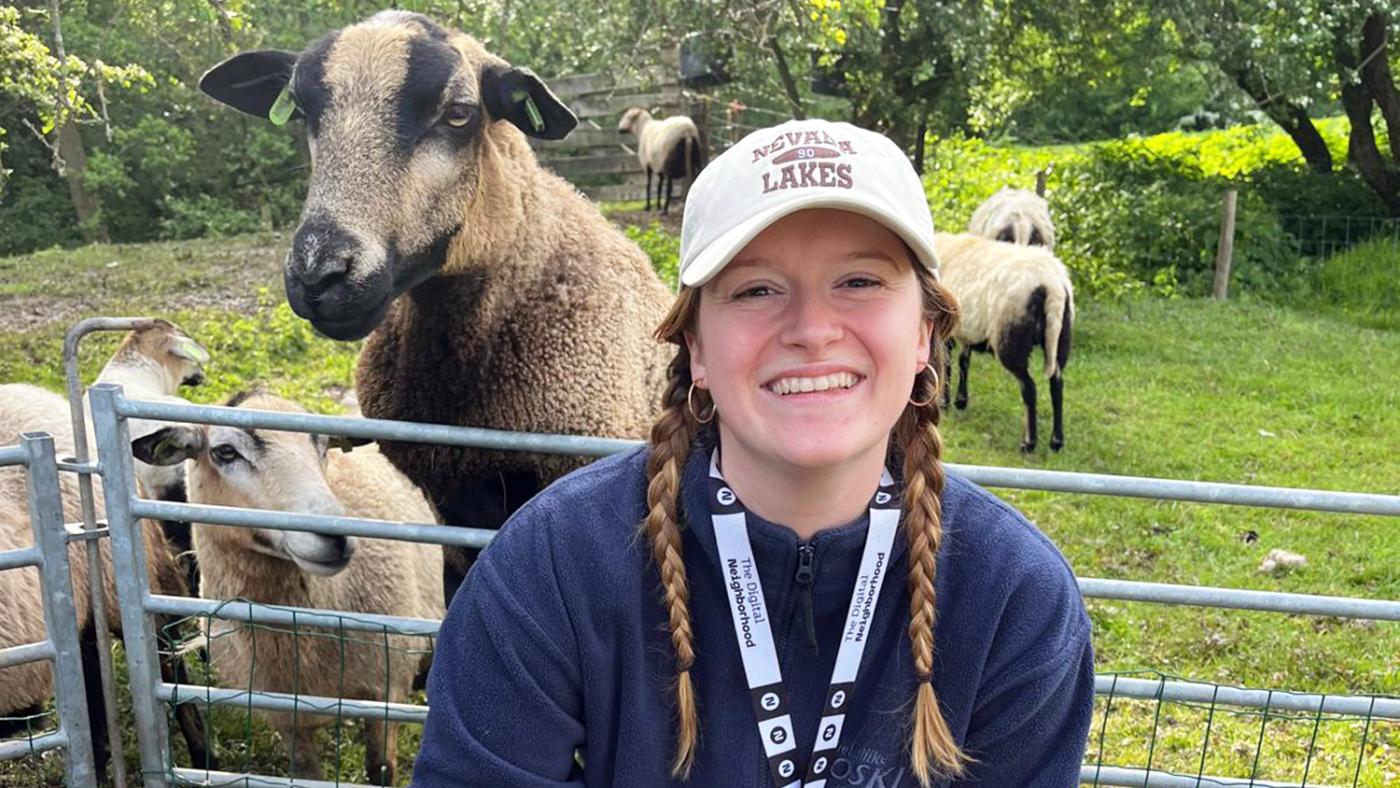
Tommie Cruise & Ilse

Ilse and her turtle. Photo: courtesy of the student
“Whenever I walk into my room, Tommie swims to me to say hello. He’ll stick his head out of the water. It’s so sweet.” Artificial Intelligence Master’s student Ilse houses a red-eared slider in her student room in Kanaleneiland. His name is Tommie Cruise and he has already seen quite a bit of the world. “The turtle belonged to my aunt who lived in the United States. He lived at several addresses until moving with my aunt to Amsterdam.”
Tommie also had a little brother but they had to be separated because they fought a lot. Ilse: “My aunt put one turtle in the canal and I offered to take the other one. My parents told me I couldn't keep a turtle in a dorm room, but I decided to just give it a try. Three years in, things are still going very well.”

Tommie is an energetic turtle, says Ilse. Once every two weeks, Ilse cleans his tank and Tommie gets the chance to explore her room. A red-eared slider can survive both on land and in the water. “He can run away very quickly and then I lose him for a while. Sometimes he even walks out of my room. Then I tell my housemates to be careful where they walk. I’m always afraid someone will step on him by mistake.”
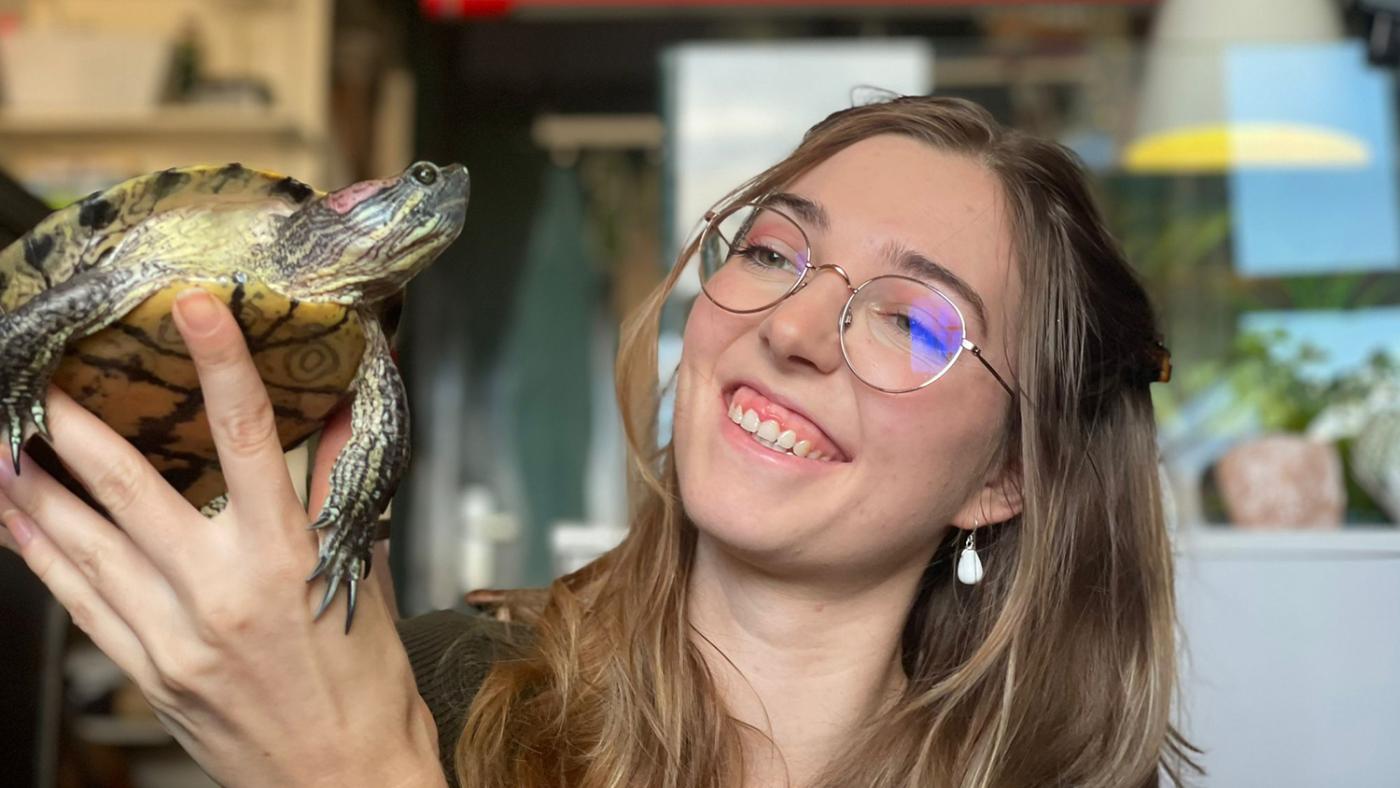
Visitors often find it very interesting that she has a turtle as a pet. “Sometimes when I’m not home, a roommate texts me to say they were in my room to show Tommie to their friends. I think that’s a good thing, Tommie likes a bit of entertainment.” Occasionally, she also plays tic-tac-toe with her turtle. “I draw on the glass of his aquarium and put a cross for him where he goes with his head. He often wins.”
Tommie has managed to escape from his tank a few times, so Ilse tries to challenge him with fun games. “For example, I hang something tasty for him above the water so that he has to make a lot of effort to grab it. If people have any tips for other challenges, I’d love to hear them. He’s a rare pet and it’s not easy to find people who know about reptiles.”
Herma, Kardashian & 13 roommates
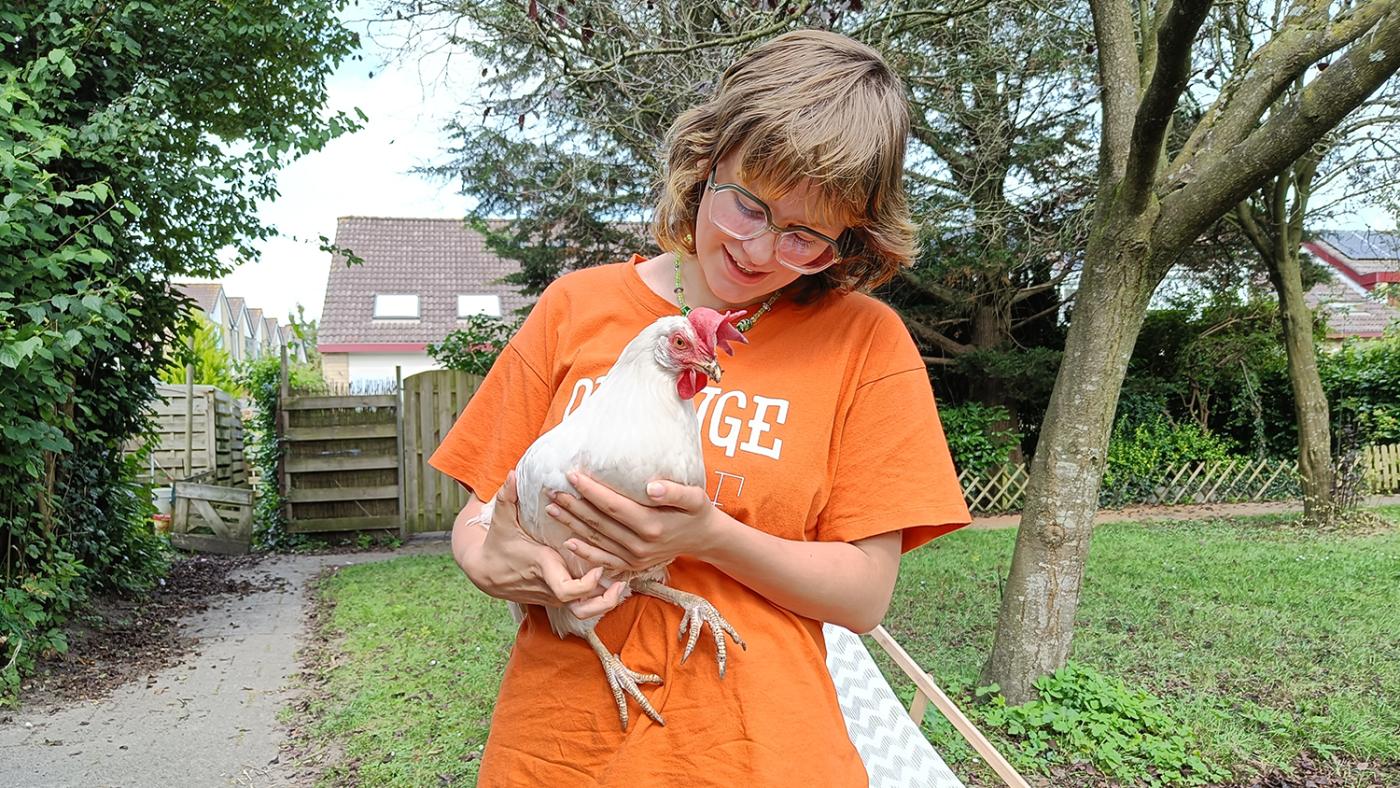
Lara and her chicken Photo: courtesy of the student
“I like it when I hear them cackling in the background,” says Image & Media Technology student Lara about the two white Leghorn chickens that scurry around in the back garden of her shared house in Lunetten.
DUB has visited this house before because it is shared by both Dutch and international students. The founder of the house wanted to welcome anyone in need of a room, regardless of nationality.
Chicken Herma is named after the founder, while Kardashian’s namesake is obvious. This student accommodation with thirteen residents consists of three separate houses that have been combined into a whole. The chicken coop, painted bright red, has a sign that says ‘house four.’"

"House four". Photo: Julie Nijburg
To ensure the chickens are cared for daily, the house has a chicken committee comprised of three members. One of them is Isis, who studies Global Sustainability Science. “In addition to feeding and cleaning the coop, we also like to let the chickens out of it so they have a chance to run around in the courtyard. Fortunately, the neighbours don't mind it.”
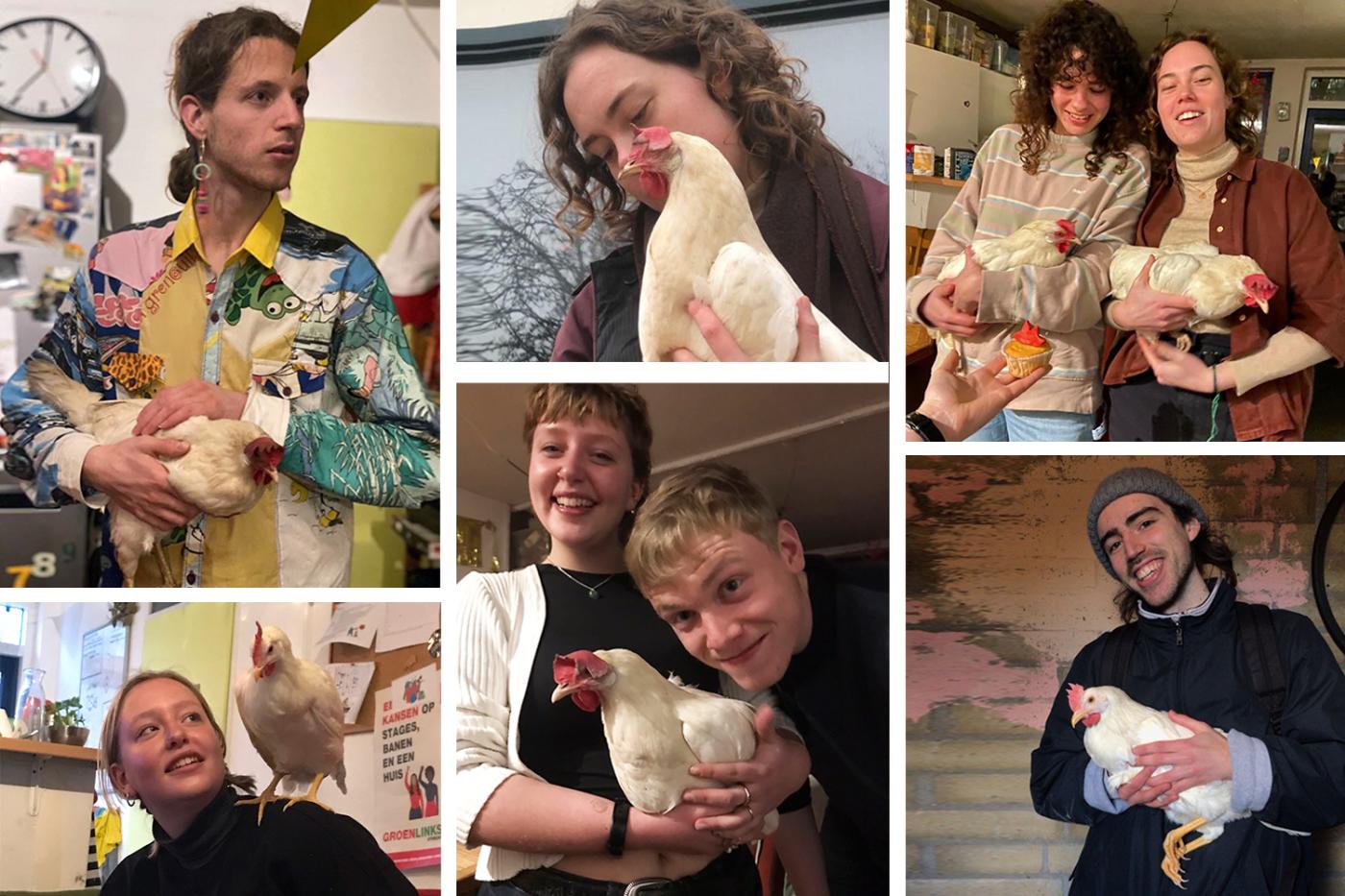
The chicken and the roommates. Photos: courtesy of the students
Lara says that before the chickens moved in, they had never been outside. “They had the time of their lives when we first put them in the courtyard.” They had never been outside before because they used to be laboratory animals at the Faculty of Veterinary Medicine. But that was almost three years ago. Former roommate Floor, a Veterinary Medicine student, proposed to take them in to save the animals from slaughter after the scientific tests were over.
“It’s pretty unique for students to have chickens. But they make sure our fridge is always supplied with eggs,” says Lara. Isis: “Many of us are concerned with sustainability and responsible eating. The chickens eat most of our vegetable scraps, so they are a good asset to our house.”
Last year, on World Animal Day, the roommates baked cupcakes using the chicken’s eggs. “We made a red chicken comb on the top of the cake. We also wrote cards with a sweet message for everyone. We pretended that Herma and Kip (Chicken) Kardashian had done that for us,” recollects Isis.

Isis with one of the chickens. Photo: Julie Nijburg
Eight sheep for eight roommates
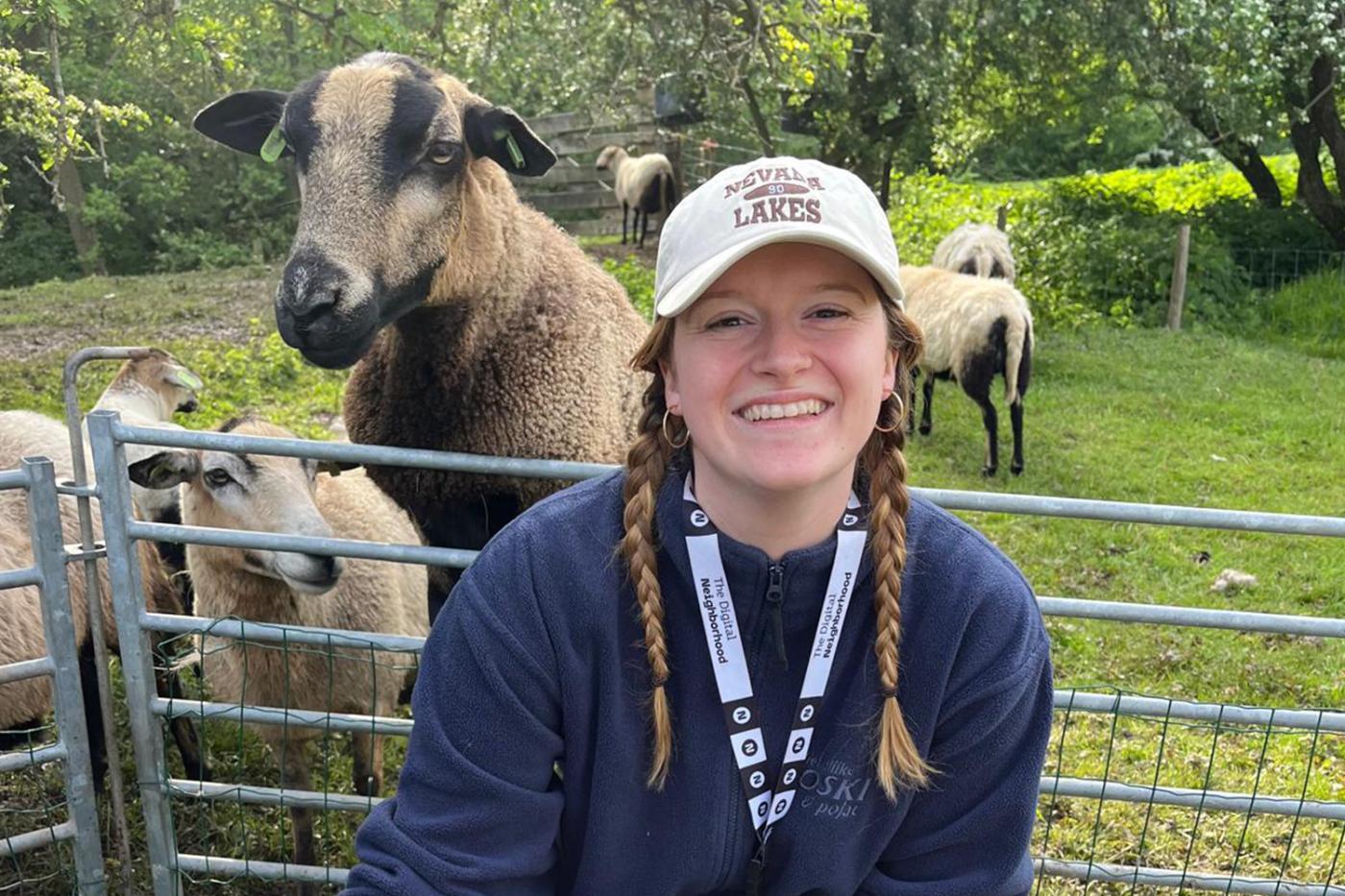
“I feel so peaceful when I’m there, it’s very mindful,” says Jade about the flock of sheep she takes care of alongside her eight roommates. The animals graze in the Zilveren Schaats Nature Reserve in Eastern Utrecht. The eight Maasduinen sheep are owned by a farmer in Limburg. People living in ten houses in the area take care of them voluntarily. Jade's house is one of them.
Jade studies International Dramaturgy at the University of Amsterdam and is the head shepherd of the house. Together with her housemates, she has been taking care of the animals for several years. They have a full week of sheep duty once every few weeks. During this week, they go to the sheep once a day to feed them, give them water, count them, and verify if they are not limping. They also provide the animals with a good dose of attention.
The sheep graze on a piece of protected land where they serve as nature maintainers. “No people other than the caretakers can come here, and you are only allowed to come if you're on sheep duty. Additionally, no more than four people are allowed to be around the sheep.”
Although Jade would prefer to go there more often to say hello, she understands why that is not allowed. “The idea is that nature takes its course here as much as possible,” she explains. This breed of sheep does not need to be sheared either as they have a natural moult. “I don’t think the sheep want a lot of people around them during the day.”
Jade and the sheep. Photo: courtesy of the student.

Counting sheep... Photo: courtesy of the students
Last summer, a few lambs were born and the herd grew to 29, says Jade. “We didn’t plan to get so many lambs, but we loved it. It was so cute.” Since they were so many, the roommates had to visit twice a day to bottle-feed the lambs. “Those two visits had to happen at specific times. That was hard to plan, but we got a lot of love and fun in return.”
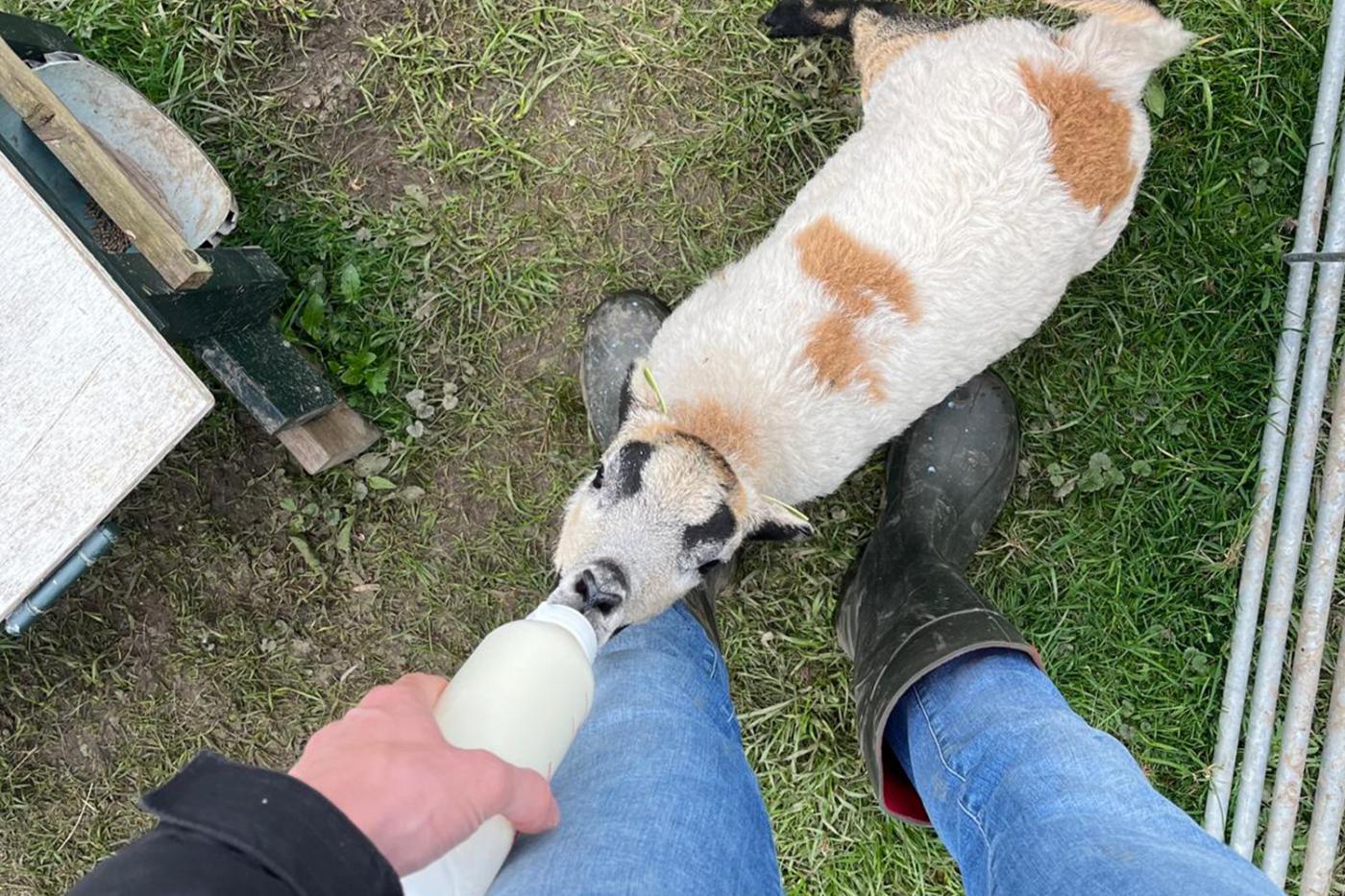
Feeding the lambs. Photo: courtesy of the students
Unlike many other sheep in the Netherlands, the sheep they take care of did not catch the bluetongue virus. Even so, one of them died recently. It was Jade’s favourite lamb. “It had crooked legs, so it couldn’t stand properly. It was also much smaller than the rest, which made him even cuter. When I heard that this lamb had fallen into the water and drowned, I broke down and cried.”
Jade and her housemates deliberately refrain from naming the sheep. “We shouldn’t get too attached to them because the herd changes its composition regularly. The breed is being developed even further so that, every so often, several adult sheep leave and a few lambs remain.” Although Jade sometimes finds the work difficult, she enjoys taking care of the sheep. “I’m so looking forward to having the sheep for a week, even when it’s raining cats and dogs.”
World Animal Day
In 1929, animal protectors thought it was high time for a day to reflect on animal welfare, so they declared October 4 (the death anniversary of Francis of Assisi, their patron saint) as Animal Day. The first World Animal Day was officially celebrated on October 4, 1930.